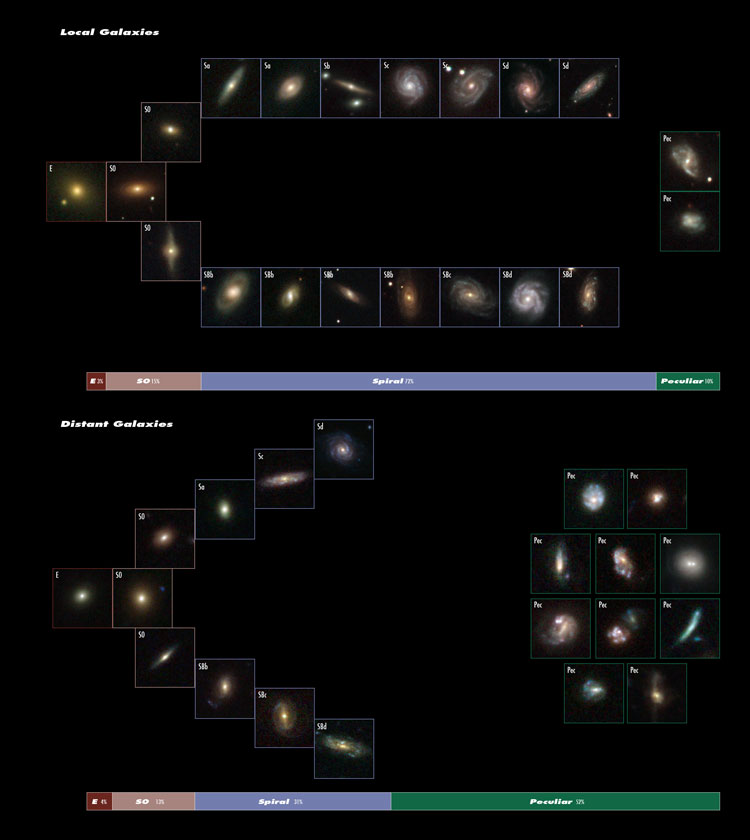Today's Spiral Galaxies Were Once the Ugly Ducklings

A European probe made its closest-ever swing by Mars' moonPhobos Wednesday on a quest to learn more about the inner structure of the mysteriousMartian satellite.
The European Space Agency (ESA)'s Mars Express spacecraftflew in about 42 miles (67 km) above the rocky moon's surface. The pass was oneof 12 scheduled flybys of Phobos,each with its own scientific objective.
"I'm very happy that it's working so well," GerhardSchwehm, head of ESA's Solar System Science Operations Division, said after themaneuver. "This close encounter by MarsExpress has been a great chance to learn more about the inner structure ofPhobos."
Phobos is the larger of Mars' two diminutive moons (theother is Deimos). With a diameter only about 14 miles (22 km) wide, Phobosis not massive enough to have rounded into a sphere when it formed. Rather, itis shaped irregularly, more like a lumpy asteroid than a moon.
The goal of this pass was to study the mass distribution andgravitational field of this body. So any kind of movement by the spacecraft,even the miniscule changes caused by using its cameras to snap pictures, couldthrow the measurements off.
"This is a unique experiment and requires thespacecraft to be entirely passive, so that the only deviations to its motionare produced by the gravitational field of Phobos (which for Mars Express isjust one-billionth the strength of Earth?s gravity at the surface of ourplanet)," wrote ESA spokesperson Stuart Clark on the Mars Express Blog.
Sadly, that means no pretty pictures from this flyby.
Breaking space news, the latest updates on rocket launches, skywatching events and more!
Luckily, new high resolution pictures of Phobos are expectedafter subsequent approaches starting March 7, ESA officials said.
- Image Gallery: Mars Express - A Year of Discoveries
- Video - Two Moons of Mars Seen Together
- Mars in 3D: Images from Mars Express

Space.com is the premier source of space exploration, innovation and astronomy news, chronicling (and celebrating) humanity's ongoing expansion across the final frontier. Originally founded in 1999, Space.com is, and always has been, the passion of writers and editors who are space fans and also trained journalists. Our current news team consists of Editor-in-Chief Tariq Malik; Editor Hanneke Weitering, Senior Space Writer Mike Wall; Senior Writer Meghan Bartels; Senior Writer Chelsea Gohd, Senior Writer Tereza Pultarova and Staff Writer Alexander Cox, focusing on e-commerce. Senior Producer Steve Spaleta oversees our space videos, with Diana Whitcroft as our Social Media Editor.
